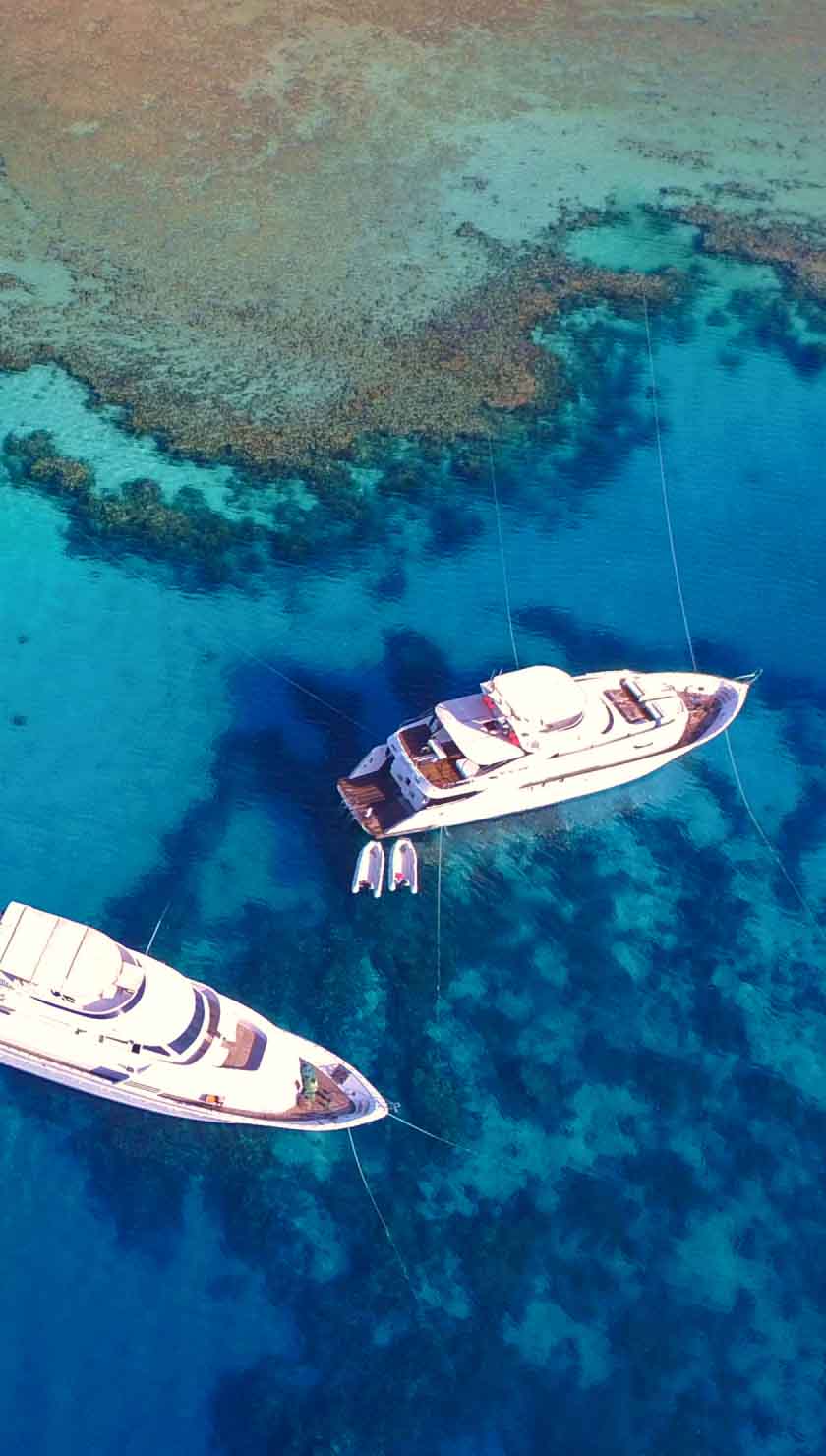Liveaboard Diving in Waigeo
What To Expect On A Waigeo Liveaboard
Waigeo liveaboards will usually visit here as part of a Raja Ampat itinerary. It is situated to the North of West Papua, Indonesia. The island is the largest in the famous Raja Ampat archipelago, renowned for its diverse flora and fauna both above and below the ocean. The region was discovered by Portuguese explorers in the 16th century and later studied by British explorer and naturalist Alfred Wallace, who studied some of the islands' fauna in the 19th century. A wide selection of Indonesian liveaboard operates itineraries throughout Raja Ampat, including Waigeo.
The island has a booming pearl farming trade in addition to being a popular tourist destination with a few resorts available for visitors. The pearl farms can be seen around the island, and the one at Sele Pele is open to visits if booked in advance. This is a fascinating opportunity to learn about the history of pearl fishing and how pearls are seeded and grown on farms. Waigeo is also home to the region’s capital, Waisai, a modest city with some basic tourist facilities. Other than Waisai, the island is, like much of the Raja Ampat islands, quite isolated and untouched.
Waigeo Underwater
Liveaboards to Waigeo offers a diverse range of dive sites for various interests and levels of diving experience. The sites are normally 25-30 meters deep with excellent visibility, sometimes up to 30 meters. The currents on the island's Southwest end are the most severe, and dive sites on this site are not really suitable for absolute beginners.
The diving is mostly on coral reefs, some with deeper areas and drop-offs where sharks can be seen. However, the main reason to take a dive cruise to Waigeo is the sheer number and variety of fish and critters you can find in every corner of the reefs here. Lionfish hide in small caverns, and intricately colored juvenile emperor angel fish can be found close to the corals, along with Napoleon Wrasse and fusiliers.
Waigeo is also a top location in Raja Ampat for diving with cephalopods. The reefs have numerous kinds, including squid, blue-ringed and red octopus, and cuttlefish. There are also occasionally turtles at some of the dive sites in Waigeo, which can be seen grazing on the reefs. Macro lovers, with mantis shrimp and the stunning sea dragons to photograph, won't be disappointed either.
Dive Sites of Waigeo
Liveaboards to Waigeo will visit numerous dive sites during the trip, some of which are outlined below;
Four Kings (Raja Ampat) Dive site is one of the most stunning sites. Named after the archipelago, this reef boasts some of the finest corals in the region. This place is a photographer's dream, with a galore rainbow of color, critters, and reef fish. The bird wall to the North is also rich with fish life and the occasional green turtle.
Sele Pele and the jetty near the pearl farm are both critter heaven. There are frogfish, razorfish, cuttlefish, and octopus to be found in these reefs. The advantage of these two sites is that the current conditions are normally mild, unlike much of this region.
The Corner on the southwestern side offers a more challenging dive with strong currents along the reef. The payoff is worth the extra effort to stay on, though white and black-tipped reef sharks are common here in deeper waters. If you keep a keen eye out on the bottom, it is also possible to see the rare Wobbegong sharks resting on the slope.
Top Tips for Divers
- The currents in parts of Waigeo can be milder than other areas, so these might make a better dive for those with less experience.
- The water is warm, but remember that fire urchins and stone fish are in this area, so consider covering your skin.
- Waigeo town has more facilities than most of the Raja Ampat islands, but this is a frontier destination, so make sure you bring lots of spares of anything you need.
Getting to Waigeo
To reach Waigeo, visitors must first reach West Papua, the closest airport to the Raja Ampat islands. The airport of Sorong has flights from Jakarta and Singapore but not international flights. From Sorong, there are two boats to Waigeo: the faster hydrofoil and the slower ferry boat, which takes around two hours.
However, the most popular way for divers to reach this region is an Indonesian diving liveaboard, which normally departs from Sorong. Due to the sites' isolated nature, most diving in Raja Ampat is done on liveaboards. There are various kinds of boats to suit all budgets and tastes. There are customized motor vessels that offer comfort and top diving facilities. However, the most popular Indonesian sailing boats, called phinisi, offer a luxurious and traditional experience.











